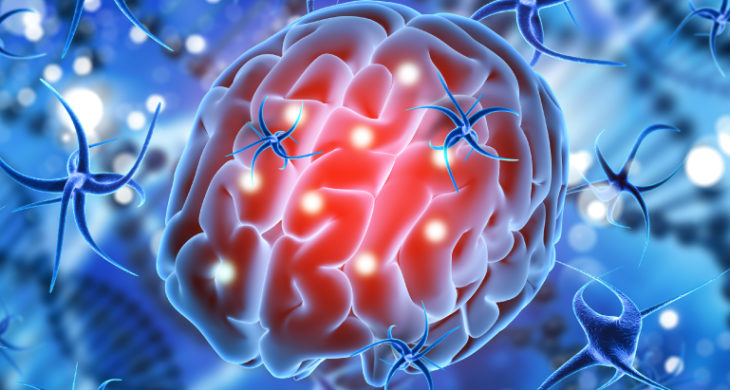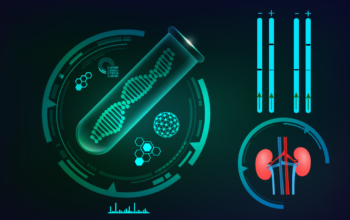
Date: 2nd June 2021
It is estimated that there are around 700 million cases of mental and neurological disorders (MNDs) reported annually, and for many patient who are refractory to current treatments, options remain very limited. Deep brain stimulation for neurological disorders such as Parkinson’s disease and epilepsy have made some progress in recent years, but require invasive surgical device implantations and lack cell-type specificity. Now, researchers have developed a new brain stimulation technique called sonothermogenetics – a noninvasive technology that uses focused ultrasound to stimulate cell-type-specific activation of neurons and evokes behavioural responses in vivo.
Focused ultrasound (FUS) therapy has the potential to noninvasively target any area in the whole brain in animal models and humans, and its unique combination of depth penetration and spatial focus makes it an attractive option for stimulating deep brain tissue. Indeed, The United States Food and Drug Administration (FDA) has already approved FUS thermal therapy for the treatment of medication-refractory essential tremor. Furthermore, advances in the technology are also being investigated in the clinic for the treatment of an ever-widening set of neurological diseases, such as Parkinson’s disease and chronic neuropathic pain.
Now, a multidisciplinary team at Washington University in St. Louis, US, led by Hong Chen have developed sonothermogenetics by building on technological advances in FUS thermal therapy. Low-intensity FUS was used to elevate tissue temperature activating genetically selected neurons to express a thermosensitive ion channel.
The team started using wild-type mice, and used adeno-associated viruses (AAVs) to express transient receptor potential vanilloid (TRPV1) specifically in CaMKII-expressing neurons in the striatum of the brain. TRPV1 is a member of the thermosensitive transient receptor potential channel (ThermoTRP) family, and is exquisitely sensitive to temperature, and controls intracellular Ca2+ influx. Using a miniaturised wearable device on the head, a small burst of heat via low-intensity focused ultrasound was delivered to the brain, which resulted in a localised small temperature increase. This activated the TRPV1 ion channel in the genetically altered neurons, switching them on.
The team was able to precisely and temporally modulate the neural activity using sonothermogenetics by altering the ultrasound properties for example altering wave types (pulse or continuous), duration and time intervals between sequential stimulation. TRPV1+ neurons switched from a silent to active state only in response to FUS stimulation meanwhile, nearby neurons without TRPV1 overexpression were not affected.
The team also witnessed a change in behaviour of freely moving mice upon sonothermogenetics. FUS stimulation repeatedly evoked rotational behaviour in TRPV1+ mice which was not seen upon FUS stimulation of untreated (TRPV1-) control mice.
Conclusions and future applications
The team here have shown for the first time sonothermogenetics can robustly control behaviour by stimulating a specific target deep in the brain. The new technology has the potential to transform approaches for neuroscience research and delivers a new method to understand and treat human brain disorders.
Sonothermogenetics has the promise to target any location in the brain with millimetre-scale resolution without causing any damage. It offers the potential of scalability, to large animals and hopefully humans in the future, which the team will be pursuing. They will be focussing on determine whether repeated stimulation and overexpression of TRPV1 has any side effects at the structural and molecular levels, which will be a critical determinant for future translation to clinical trials.
This work might benefit from another recent study using machine learning to predict how patients respond to deep brain stimulation. Although the stimulation used in this study was microelectric, the machine learning algorithm analysed the brain data and predicted outcomes of stimulation creating a personalised brain map of patients. As neurological disorders can manifest differently in the brains of individual as does their response to treatment, such predictive technologies could be a valuable tool here, for example in determining optimal ultrasound properties or AAV targeting. Other efforts such as neuron transplants are being investigated to alleviate Parkinson’s disease such as the relieving motor defects and depressive symptoms seen in many patients. Due to the complexity of neurological diseases it is likely combination of approaches to alleviate the multitude of symptoms may be the most valuable strategy in giving patients the best possible outcomes.
For more information please see the press release from McKelvey School of Engineering
Yang, Y., Pacia, C.P., Ye, D., Zhu, L., Baek, H., Yue, Y., Yuan, J., Miller, M.J., Cui, J., Culver, J.P., et al. (2021). Sonothermogenetics for noninvasive and cell-type specific deep brain neuromodulation. Brain Stimulation: Basic, Translational, and Clinical Research in Neuromodulation 14, 790-800.
https://doi.org/10.1016/j.brs.2021.04.021

